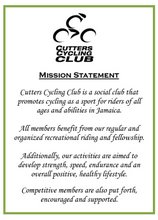 Breakfast
BreakfastThe meal before a ride should be low in fat and with no big lumps of protein. Both will tie up body resources in digestion, resources which are really needed for powering your legs. Also, cut down on fiber, which will absorb water and sit in your stomach. This is the only time where you don't want fiber in your system.
Eggs are a terrible choice, and milk is a poor beverage. Pasta or pancakes are great pre-ride meals, while whole-grain cereal with milk is much less so.
Try to pick a food with a low glycemic index, such as pasta, grains like all-bran and oatmeal, or maybe rice and sweet potatoes. These will release their energy over the duration of a long ride, rather than twenty minutes after the meal. Avoid such cereals as corn flakes and cheerios, white breads, and sugars. Check out our article explaining the mysteries of the glycemic index.
The "Sugar-Right-Before-The-Ride" Myth
You are seriously hindering yourself by drinking a heavily sugared drink minutes before an event. Within five to seven minutes, the sugar enters your bloodstream, increasing glucose concentrations beyond what your body will tolerate. Your body's response it to dump insulin into your blood, to neutralise the sugar.
This would be fine if the glucose was all stored as glycogen in only the quadriceps, but the blood is drained of energy to stock up the arms and back with non-transferrable glycogen. Meanwhile, your blood sugar is lower than before, and the insulin interferes with using fat for energy.
Not a pretty picture.
Pre-Ride
Don't eat anything within an hour of the ride. If you leave less time, you will sabotage your blood sugar with an insulin reaction. An hour leaves enough time for insulin and glucose levels to return to normal, but leave more for solid foods and even more for hard-to-digest proteins and fats.
Don't eat anything for the first half hour of the ride. Despite PowerBar Inc.'s marketing, you are not doing yourself any favours.
On the other hand, eating during the ride is critical for endurance -- otherwise you'll bonk after about two hours. The sugars are used directly by your muscles, sparing their precious stores of glycogen.
Carbohydrate Loading
I'd advise against it. "Carbo loading" does not mean eating a big pasta dinner the night before. Rather, it is a program which attempt to temporarily increase the muscles' appetite for stored glucose by completely draining them a week before the big race, teasing them for a few days with a low-carb diet, and spending the last couple of days pouring on the pasta.
Carbohydrate loading doesn't always make you ride faster, and it is easy to screw up. Further, there are negative side effects, such as overall tightness, bloody urine, and cardiac abnormalities which could lead to a heart attack.
Calorie Comparison of Snack Foods
To prevent bonking, where you deplete your body's glucose reserves (stored as glycogen in the liver and muscles), you must consume at least 250 calories per hour of brisk riding, with some before and a few times that after your ride. Eat more at high altitude or if riding hard, as both increase caloric requirements dramatically. Eat regularly to avoid the brutal swings in your blood sugar.
Some stick to conventional foods, such as bananas, and merely keep an energy bar or two stashed for emergencies, which is partly psychological in giving you the energy you need to not eat it.
Here are some good snack foods:
- 3 medium-sized apples: 255 calories
- 2 medium-sized bananas: 244 calories
- 2 medium-sized pears: 244 calories
- 6 large, dehydrated, raw prunes: 258 calories
- 6 large, fresh, raw figs: 240 calories
- 5 oz of potato salad: 264 calories
- 2.5 small, baked white potatoes without skin: 238 calories
- 3/4 medium-sized, peeled avocado: 251 calories
- 2 medium-sized hot dogs: 248 calories
- 3 medium-sized boiled eggs: 234 calories
- 2.5 oz of American or Swiss or Monterey Jack cheese: 265 calories
- 1 whole-wheat sandwich with 2 tbsp of peanut butter: 284 calories
- 1 oz of roasted peanuts: 229 calories
- 3.5 oz piece of pepperoni pizza: 250 calories
- 5 fig newton cookies: 275 calories
- 1 stick of Oat Energy Bar recipe: 188
- calories
- 1 stick of Corn Syrup Energy Bar recipe: 250 calories
- 1 Raspberry Nutri-Grain(tm) Cereal Bar: 140 calories
- 1 PowerBar(tm): 225 calories
In the commercial snacks section is a nutritional comparison of Fig Newtons, PowerBars, Nutri-Grain bars, and a recipe for energy bars.
- 5 slices of whole-wheat bread: 280 cal
- 10 medium-size plain or graham crackers: 250 calories
Especially in digestion-disrupting summer heat, plain crackers and white bread can help to settle an upset stomach.
Fig newtons are great, as they are small and light, but have 11 grams of carbohydrates and about 50 calories each. They are also a great source of sodium and potassium, to replace the electrolytes depleted through sweat. As newtons only have about a gram of fat and 0.4 grams of protein per cookie, it is good to combine them with commercial sport foods and gels, or the energy bar recipes which are high in fat and protein.



No comments:
Post a Comment